Cats in the Mews: June 17, 1903
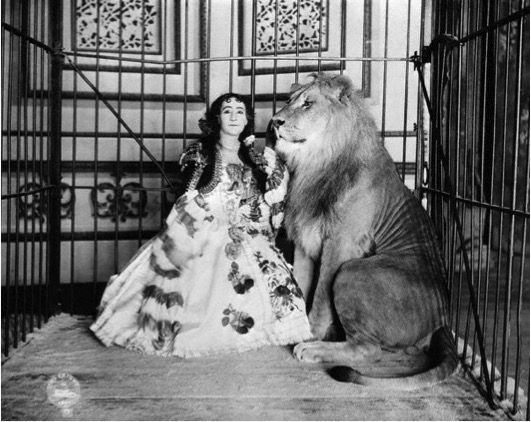
During the week of June 14, 1903, Madame Adjie and Her Trained Lions was the headline act at the Circle Theatre on Broadway. At the beginning of the week, Adjie had 1 male lion and two lionesses. By the end of the week, she also had a mother cat and several kittens.
Madame Adjie Castillo was born in Saginaw, Michigan, on December 25, 1867. According to news reports, her mother was a Pueblo Indian and her father was a Spanish Jew. Apparently one or both of her parents performed with animals; Adjie was welcomed into the Bostock show when she was a young child, where she learned how to train all kinds of animals.

Sometime during the late 1890s, Adjie teamed up with a lion trainer named Frank Hall on the vaudeville circuit. On stage, she played guitar and sang Spanish songs to the lions. She also wore ruffled Spanish costumes, which the lions pawed at and tore. “The paid for the dresses,” she once told a reporter. “They made money for me, so why not?”
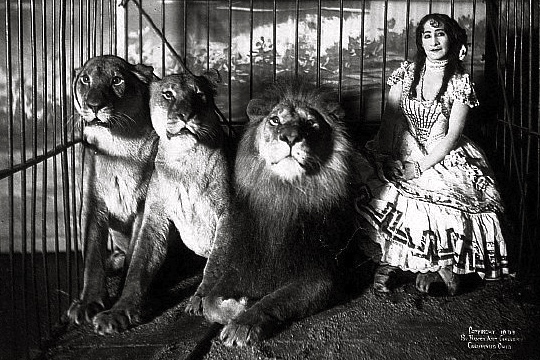
Adjie’s relationship to Hall is sketchy: one newspaper article from 1899 said they were married at that time; another said they married in 1910. Still another newspaper said Adjie was engaged to a Brooklyn man named Emerson D. Dietrich, who was “killed and partly devoured” by six of Adjie’s lions during a show in Chicago in June 1914. According to the Fort Wayne News, Emerson was Adjie’s manager and press representative; the two were going to get married that summer.

The Mother Cat Joins the Pride
On June 17, 1903, the New York Evening World reported that a very daring cat gave birth in the cage occupied by Adjie’s lions at the Circle Theatre. Why she chose that dangerous and awkward space to have her kittens is anyone’s guess. The question of why the lions didn’t attack her is also up for grabs.
At first, the lions did not know what to make of the intrusion. They growled a bit and swished their tails.
The mother cat did not let the lions disturb her, and she acted as if she didn’t have a care in the world. She would blink back at them whenever they glanced in her direction, as if to say “leave me alone, I’m busy now.” The little kittens also appeared quite content in their new world on the Circle Theatre stage.

Eventually, the lions began to wag their tails good naturedly, and then “they marched over and paid Mrs. Cat a congratulatory call.” At one point, the smallest of the kittens tried to poke the largest lion in the eye, but all the lions and kittens got along famously together.
According to the Evening World, the mother cat and the lions had a long talk, and it was decided that the two families should live together.

Madame Adjie continued working with lions for about 25 years, during which time she raised 116 lions to maturity. In addition to the death of her fiance in 1914, she had one other reported bad accident in 1899, while performing at the Dewey Theatre in New York City.

Apparently, she had tried to coax a lioness over a hurdle, but the large cat attacked her and ripped her right arm from shoulder to wrist. Thirty stitches were required to close the wound. Several women in the audience fainted.
In her later years, Adjie appeared in two silent films: “The Christian” and “The Sign of the Cross” (in both films, a lion was the menace).
A big fan of Franklin D. Roosevelt, Adjie joined the Works Progress Administration in 1936 at the age of 60 (photo at left) and worked on jobs in New York City.
There is very little information published about Adjie and her lions, so I do not know where or when Adjie passed away. I also do not know how long the cat family remained with her lions.
Columbus Circle and the Circle Theatre
Opened in 1901 by Charles E. Evans and his theatrical manager and partner, W.D. Mann, the Circle Music Hall at 1825 Broadway in Columbus Circle was designed to present “high class, polite vaudeville” aimed at middle-class families who lived in the neighborhood. I guess for one cat, at least, this also meant that the venue was a great place to bring kittens into the world.
The location of the theater, at Broadway and 60th Street, was formerly the farm of John H. Tallman, depicted in the map and illustration below.
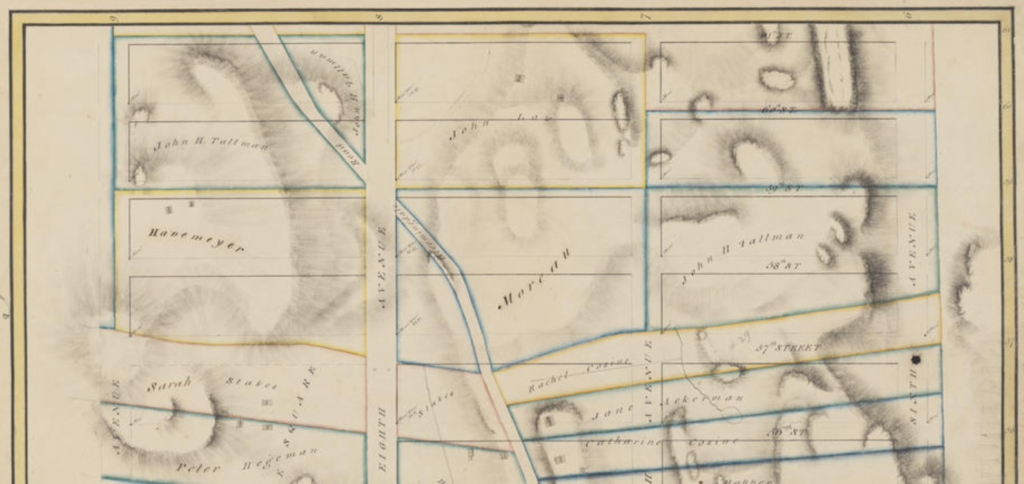

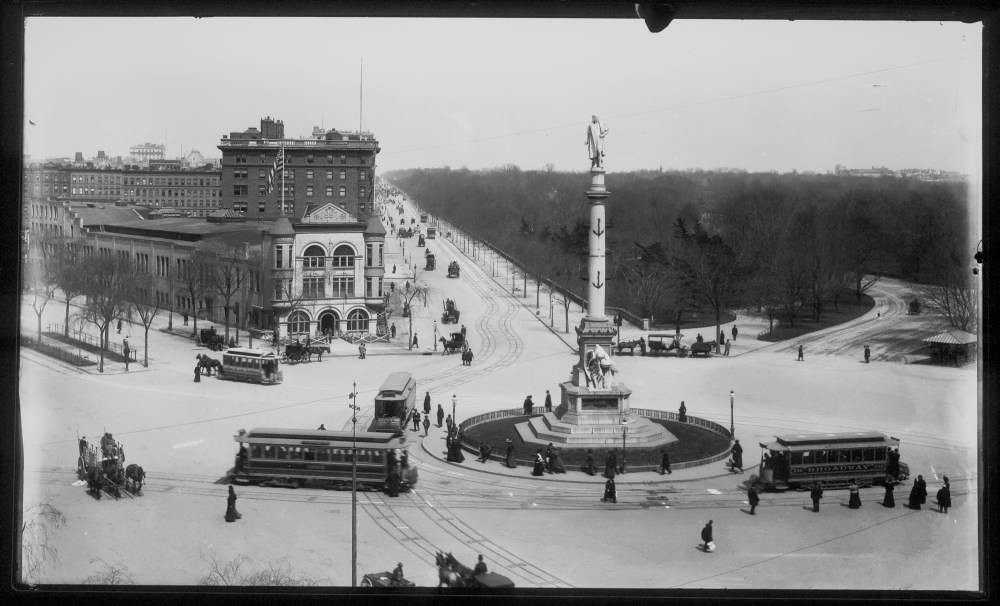
Shortly after the music hall opened, a neighboring church reportedly objected to an entertainment venue so close. Following a nearly-year-long legal battle, the church won out, and Evans and Mann were forced to change their venue to an orchestra hall. The public had no interest in such a venue, and thus is was closed by the end of 1901.

In 1902, an agreement was reached with the church and the Music Hall became the Circle Theatre, now under new management. For a few years, the theater presented only legitimate theater, but within a couple of years, vaudeville was back in. By 1905, when the nearby Colonial Theatre began presenting vaudeville acts, the Circle Theatre switched from lion shows and other acts to burlesque. Occasionally, early motion pictures were also presented at the Circle Theatre.

In 1906, the Circle Theatre was completely remodeled by Thomas W. Lamb (the roof was raised, a second balcony was added, and the Broadway facade was rebuilt in Neo-Classical style). The Circle Theatre returned to legitimate theater for a few more years until returning to vaudeville and burlesque before Loew’s stepped in to run the theater as a movie house.

Loew’s shut the theater down in 1931, and it operated for the next few years as an independent movie theater. In 1935, during a labor dispute, a bomb tossed into the theater caused massive damage to the lobby and box office.


The Circle Theatre was gutted in 1939 and rebuilt as the Columbus Circle Roller Rink. The rink survived until 1954, when most of the western side of Columbus Circle was bulldozed for the construction of the old New York Coliseum Convention Center.
The Coliseum closed in January 1998; demolition began in the winter of 2000. The Time Warner/Related joint project, called the Time Warner Center, now stands on the site where a mother cat once gave birth to kittens in a lion’s cage.
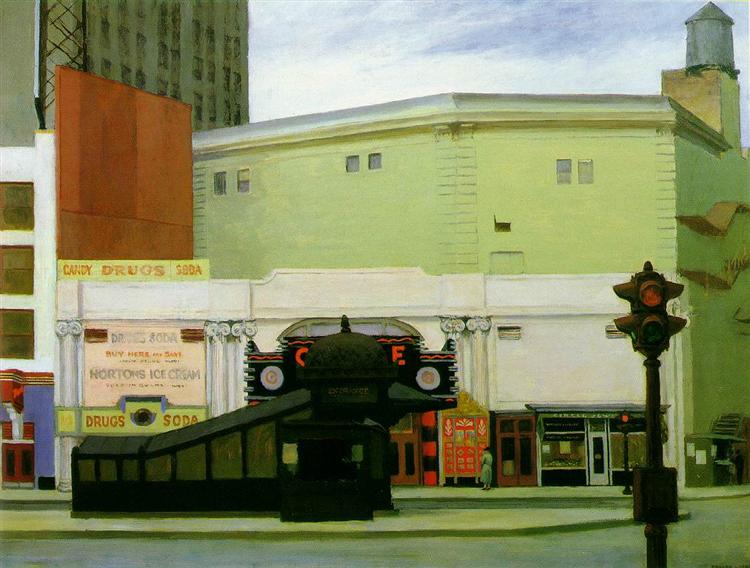




Thank you yet again. The photo is fantastic for that day and age as was Adjie. Her cats had teeth and claws. Must have been before the defanging and declawing phase for some acts.
Fascinating! Your account of Dietrich’s demise led me to other newspapers of the time, where I learned Dietrich may not have been killed by the lions after all. That a male lion trainer had confessed to having shot him and then having let the lions maul the body to cover the crime. Evidently authorities were never able to substantiate it and the lion trainer was never charged with a crime. Poor Dietrich!
Wow, I didn’t dig into the story about Dietrich, but it sounds like the making of a book or TV documentary! Thank you for this additional information.